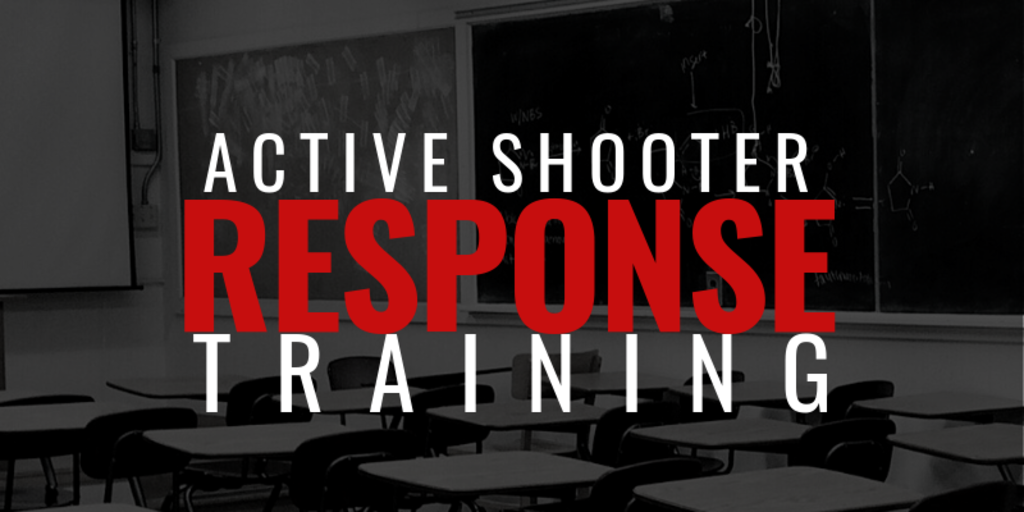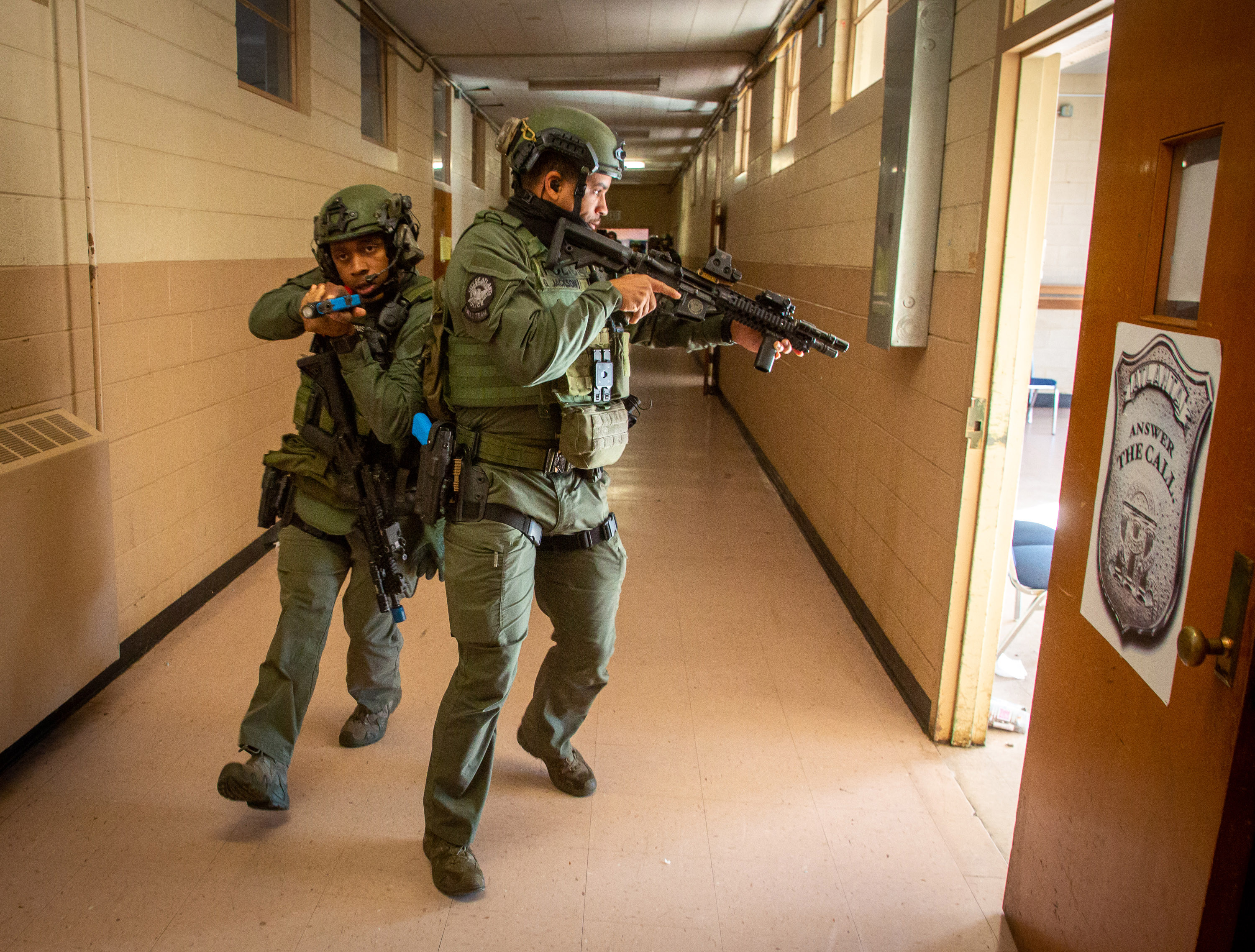Implementing Energetic Shooter Training: Best Practices for Creating a Safe and Prepared Area Environment
As areas face the distressing fact of active shooter cases, the implementation of thorough training programs ends up being imperative. A successful method rests on not only the advancement of tailored educational programs that attend to local risks but additionally the involvement of varied stakeholders. By employing a selection of training techniques, neighborhoods can make certain that all participants are equipped with crucial abilities. However, the challenge depends on keeping a flexible framework that progresses with arising threats. What are the crucial elements that can change a conventional training program right into a robust design for neighborhood durability?

Understanding the Demand for Training
In an era marked by boosting occurrences of physical violence in public areas, comprehending the need for energetic shooter training has actually never ever been extra crucial. Detailed training campaigns can gear up participants with the expertise and skills to respond decisively.
Additionally, the emotional effect of violence on people and neighborhoods can not be overstated. Training promotes a feeling of empowerment and readiness, making it possible for people to really feel more safe and secure in their environments. It likewise advertises a society of safety and security, where recognition and vigilance end up being indispensable elements of day-to-day life. The advantages of active shooter training extend beyond immediate feedback; they consist of improving interaction protocols and boosting overall precaution within companies.
Trick Parts of Effective Programs
Efficient energetic shooter training programs integrate a number of crucial elements that boost preparedness and feedback abilities. Extensive educational program development is crucial, making sure that training content is appropriate, evidence-based, and customized to the specific requirements of the organization or area. This includes recognizing the characteristics of energetic shooter occurrences and the emotional effect on individuals included.
2nd, reasonable training circumstances must be used to replicate potential situations, allowing participants to exercise decision-making and reaction methods in a regulated atmosphere. These drills help with muscle mass memory and build self-confidence among individuals.
Third, a focus on communication protocols is crucial. Establishing clear lines of communication amongst police, emergency -responders, and participants guarantees coordinated actions throughout an incident. Routine updates and correspondence course assist maintain interaction paths clear and effective.
4th, recurring evaluation and feedback systems must be integrated right into the training program - active shooter training. Assessing the performance of training with individual feedback and performance metrics enables continual enhancement
Lastly, cultivating a culture of security and readiness within the community urges alertness and positive steps, guaranteeing that individuals are not only qualified however also engaged in preserving a protected environment.
Engaging Neighborhood Stakeholders

To successfully involve these stakeholders, it is necessary to interact the objectives and advantages of the training. Hosting informative sessions can aid make clear the training's purpose, address worries, and lay out the duties each stakeholder might play. Developing a stakeholder consultatory board can assist in recurring discussion, allowing for varied point of views and insights to be integrated right into the training program.
Structure partnerships with community leaders and companies is additionally important. Their assistance can boost outreach efforts, increase participation, and ensure that training is tailored to the imp source distinct demands of the neighborhood. Furthermore, stakeholders can aid in disseminating details and sources, reinforcing the message of safety and readiness.
Eventually, involving community stakeholders not just reinforces the training initiative yet likewise cultivates a feeling of ownership amongst citizens, causing a much more resistant and enlightened neighborhood with the ability of responding effectively to possible threats.
Training Distribution Approaches
Making use of a range of training delivery approaches is necessary to suit the diverse learning designs and requirements of participants in active shooter training programs (active shooter training). Effective training can take a number of types, consisting of talks, hands-on simulations, on the internet click this modules, and interactive workshops. Each method serves an one-of-a-kind objective and can improve the total understanding experience

On the internet modules supply adaptability and access, enabling participants to discover at their very own rate. These can consist of video clips, tests, and conversations to determine understanding. Interactive workshops motivate group discussions and analytical, promoting teamwork and interaction abilities.
Integrating a blended method that integrates these approaches not just improves the training experience yet likewise guarantees that participants are much better prepared to react effectively in the occasion like this of an energetic shooter situation (active shooter training). By addressing different discovering preferences, companies can produce a much more enlightened and receptive community
Continuous Assessment and Improvement
Routine evaluation and enhancement of energetic shooter training programs are vital to keeping their importance and performance. As hazards evolve, so must the methods and approaches employed in training. Constant evaluation ensures that training web content reflects the current intelligence on active shooter occurrences, including lessons picked up from current events and changing for arising patterns.
To promote this process, organizations must establish feedback systems that consist of participant assessments, expert testimonials, and event debriefs. Accumulating information on participant performance during drills and workouts is important, as it highlights locations needing enhancement and informs future training sessions. In addition, involving with law enforcement and emergency -responders can offer important insights into the functionality and applicability of training methods.
Routinely set up testimonials of training materials and techniques should be mandated, cultivating an atmosphere of innovation and adaptability. Organizations must additionally motivate a society of continuous knowing, where team member feel encouraged to suggest modifications based on their experiences. By dedicating to constant analysis and renovation, companies not just boost the effectiveness of their energetic shooter training programs but likewise enhance their total commitment to safety and security and readiness within the community.
Conclusion
In conclusion, efficient application of energetic shooter training demands a detailed technique that focuses on area involvement and realistic simulations. Inevitably, a commitment to recurring training and renovation grows a culture of vigilance and readiness, ensuring a more secure environment for all neighborhood members.